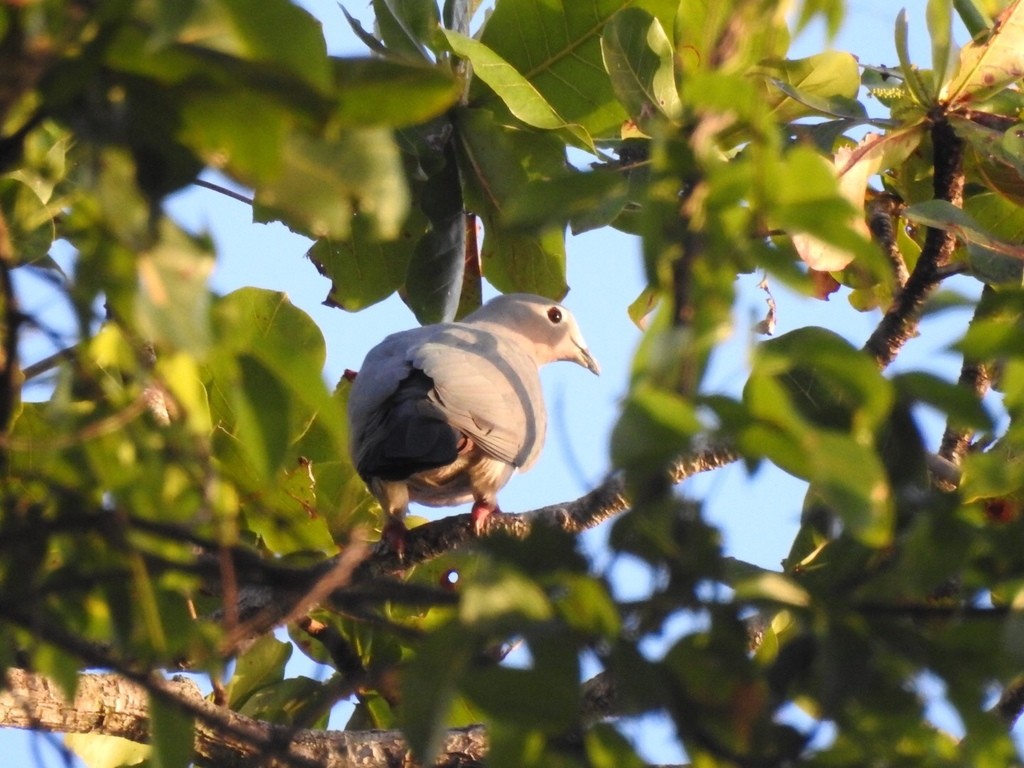Island Imperial Pigeon
A species of Imperial pigeons Scientific name : Ducula pistrinaria Genus : Imperial pigeons
Island Imperial Pigeon, A species of Imperial pigeons
Botanical name: Ducula pistrinaria
Genus: Imperial pigeons
Content
Description General Info
 Photo By devonderaad , used under CC-BY-NC-4.0 /Cropped and compressed from original
Photo By devonderaad , used under CC-BY-NC-4.0 /Cropped and compressed from original Description
The island imperial pigeon is about 39–45 cm (15–18 in) long and weighs 470–500 g (17–18 oz). The head and neck are pale grey, and there are white spectacles. The upperparts are glossy. The wing coverts and tertials are grey-green, and the primaries and secondaries are blackish. The back is grey-green. The uppertail is dark blue-green, and the undertail is chestnut. The throat is vinous, the breast is greyish-vinous, and the belly is greyish-fawn. The beak is slaty-blue, having a black tip. The eye is dark red or brownish, and the feet are red. The juvenile bird is duller and buffier. The subspecies have different sizes and glosses. 
Size
44 cm
Nest Placement
Tree
Feeding Habits
Island Imperial Pigeon primarily eats fruit, foraging high in the canopy, especially in large fruiting trees. It shares feeding grounds with D. brenchleyi in the Eastern Solomons and exhibits frugivorous behavior.
Habitat
Island Imperial Pigeon typically inhabits primary and well-developed secondary forests, often venturing to fruiting trees in partially cleared areas. This species is predominantly found on small islands and the coastal lowlands of larger islands within the broader geographical regions of tropical maritime environments.
Dite type
Frugivorous
General Info
Feeding Habits
Bird food type

Fruit
Behavior
One or two birds and small flocks are usually found; large flocks are occasionally seen. The pigeon flies swiftly and directly. It plucks fruits from branches in the canopy, and it flies across the sea to search for food. Its calls include a rising and repeated c-wooooohooo given when the bird is upright, a loud series of descending coos while bobbing up and down, and a high-pitched crrrrrurrr. In display, it flies up at an angle of 70° and then glides. Breeding has been observed from June to September and in March. The nest is built at the end of a branch and made of twigs. One egg is laid. 
Distribution Area
This pigeon is found in the Bismarck Archipelago, the Solomon Islands archipelago and small islands to the north and east of New Guinea. Its habitat is coastal primary forest, old secondary forest, mangroves and some disturbed habitats. 
Species Status
The IUCN has assessed it as a least-concern species because of its large range and stable population. 
Scientific Classification
Phylum
Chordates Class
Birds Order
Pigeons and doves Family
Dove Genus
Imperial pigeons Species
Island Imperial Pigeon